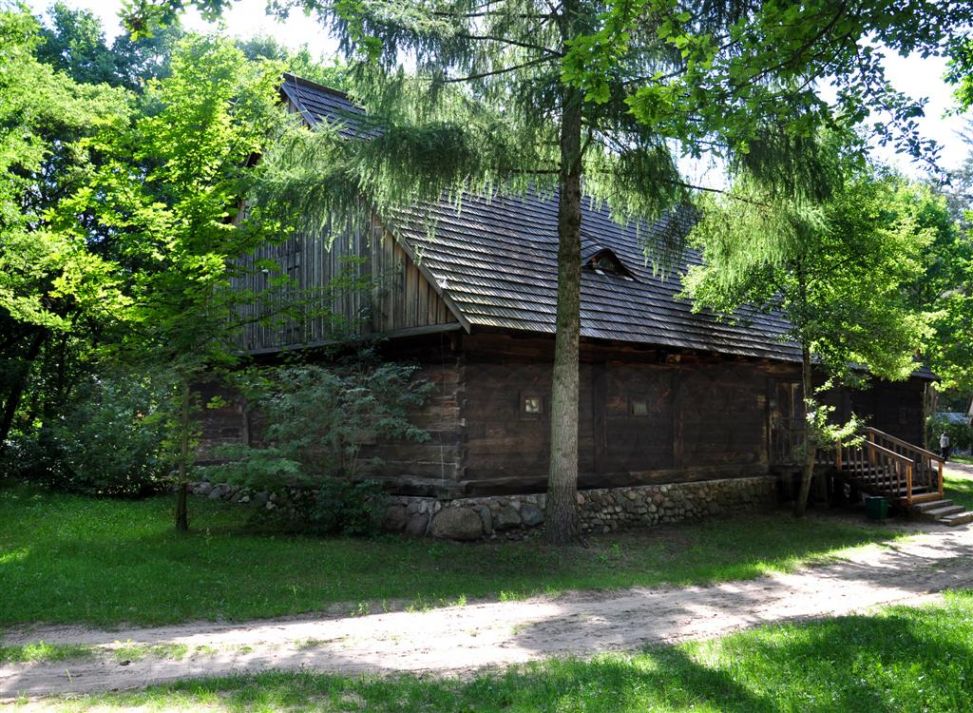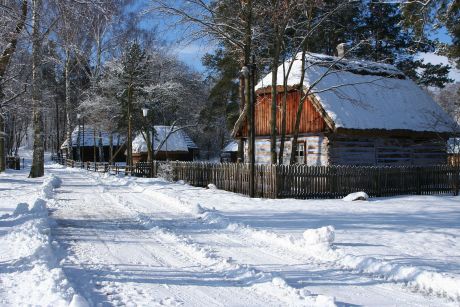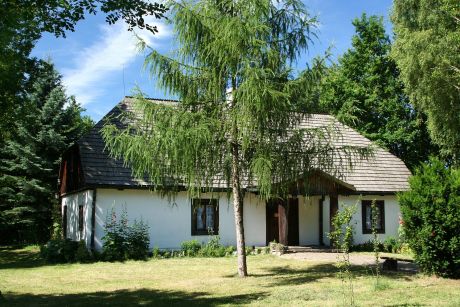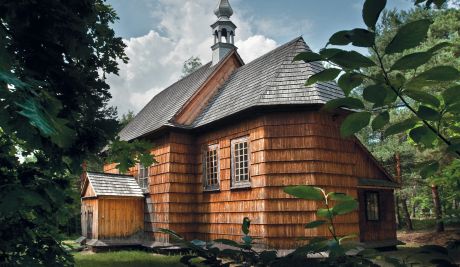As the economic building the granary was a part of the farm which belonged to the property in Wilków. It was built in the second half of the 19th century in the period in which Wilków was owned by Aleksander Grobicki. Since the moment of its movement to the Museum, the granary has served as a warehouse. At first it was the warehouse for crops, and since 1948 it has housed crops, leathers and wool. As economy, the building initially belonged to the family of Grobicki, then to the family of Kostrzewski. After the Second World War it was owned by the Commune Association “Samopomoc Chłopska” (Peasant Self-Support) in Wilków, whereas since 1972 by the Association in Błędów.
The granary is a masterpiece of the 19th-century carpentry. Its uniqueness is reflected in the internal bearing structure, which confirms a comprehensive knowledge about the structure and statics of the then master carpenters. The structure was planned so that two rows of pole divide the object into three tracks. The pole constitute a support for the beams, known as binder, which are kept by ceiling beams, which in turn constitute a support for a rafter framing. Connections of binders with poles are reinforced with angle ties. The building walls are equipped with small windows and ventilation opening. An interesting architecture is also presented in the case of a gable shingle roof with small windows – oeil-de-boeufs.
The building performs in the Museum the role of a temporal exhibition.











